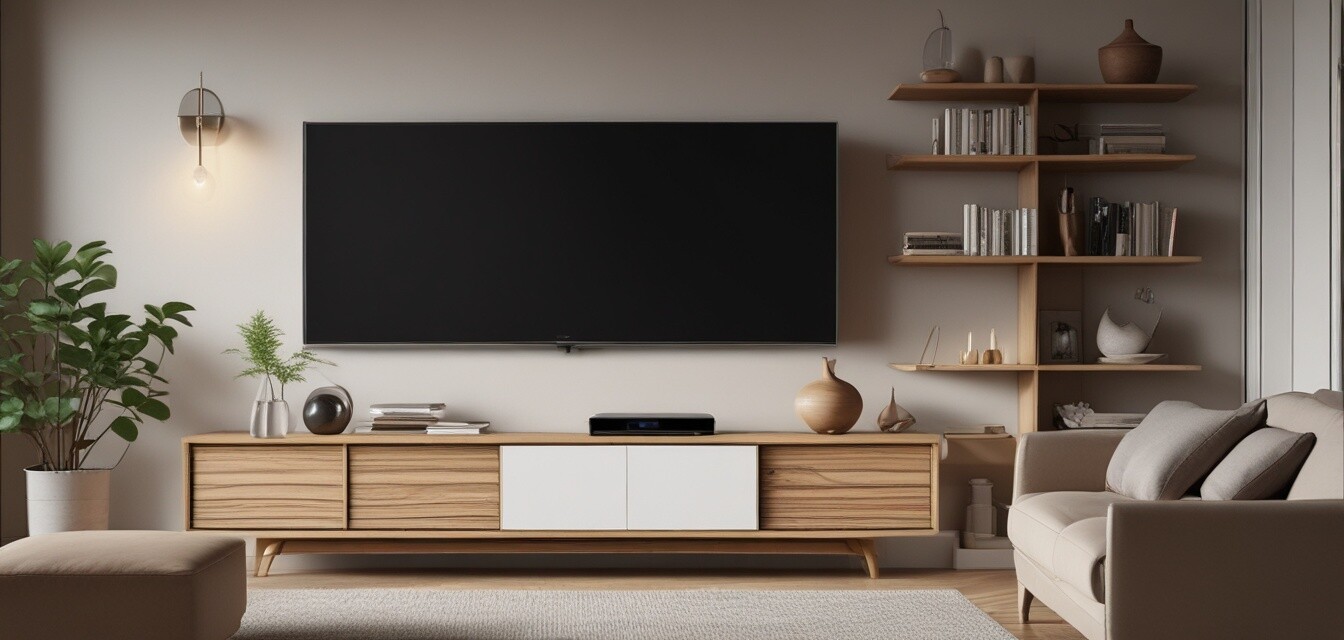
Designing a Low-Waste Living Room with Sustainable TV Stands
Key Takeaways
- Choosing sustainable materials contributes to a low-waste lifestyle.
- Eco-friendly TV stands can enhance both style and functionality in your living room.
- DIY projects can help you create a personalized eco-friendly living space.
- Consider the lifetime of materials to reduce waste over time.
- Opt for modular or versatile designs to adapt to changing needs.
Designing a low-waste living room isn’t just about aesthetics; it’s also about creating a space that reflects your values regarding sustainability. A crucial part of that is incorporating eco-friendly furniture, particularly sustainable TV stands. This article will explore how to create a greener living area using sustainable television stands, while also offering tips and suggestions for how to blend eco-friendliness with style.
The role of sustainable TV stands in your living room
TV stands serve as the focal point in many living rooms. When made from sustainable materials, these stands can support a greener lifestyle. Here are a few reasons to consider selecting a sustainable TV stand:
- Reduces environmental impact: Sustainable materials minimize negative effects on the environment.
- Supports recycling: Many eco-friendly TV stands are crafted from recycled or upcycled materials.
- Enhances indoor air quality: Eco-friendly options often avoid harmful chemicals used in traditional furniture.
Materials to consider for sustainable TV stands
When choosing a TV stand, the materials used to make it can significantly impact its sustainability. Here’s a breakdown of some popular sustainable materials:
| Material | Benefits | Considerations |
|---|---|---|
| Bamboo | Rapidly renewable, durable, and stylish. | Ensure it is sourced sustainably. |
| Reclaimed wood | Reduces waste, unique character. | Quality can vary, check for stability. |
| Metal | Long-lasting and recyclable. | Ensure it's sourced from recycled materials when possible. |
| Eco-friendly MDF | Made from recycled wood and chemicals are minimized. | Not as durable as solid wood, requires care in cleaning. |
Design tips for a low-waste living room
Here are some helpful design tips for creating a low-waste living room that feels inviting and environmentally friendly:
- Choose multifunctional furniture: Opt for TV stands that offer storage space to reduce the need for additional furniture.
- Incorporate plants: Enhance your living space's aesthetics and air quality with indoor plants.
- DIY upcycled projects: Create custom pieces using old materials, adding a personal touch.
- Prioritize quality over quantity: Invest in well-made, durable pieces that reduce the need for frequent replacements.
How to blend sustainable TV stands with your decor
Integrating a sustainable TV stand into your decor requires some thought and planning. Here are a few tips:
- Color coordination: Choose a TV stand that complements the palette of the room.
- Let the stand shine: Position your TV stand as a centerpiece or focal point in the living room.
- Soft textiles: Use soft textiles like cushions, throws, and rugs to create contrast against the stand.
- Add personal touches: Decorate with eco-friendly art and objects that reflect your style and values.
Explore more sustainable furniture solutions
While sustainable TV stands are critical, don’t forget about the other elements of your living room. You can explore more sustainable furniture solutions through our Corner TV Stands, Entertainment Consoles, and Wooden TV Stands categories.
Conclusion
Designing a low-waste living room starts with making thoughtful choices about your furniture, including selecting sustainable TV stands. By using eco-friendly materials, opting for versatile designs, and incorporating personal touches, you can create a green space that is not only functional but also beautiful. With just a few mindful changes, you can enjoy a stylish living area that aligns with your values and contributes to a more sustainable future.
Tips for starting your sustainable living journey
- Start slow - focus on one area at a time.
- Educate yourself about different materials and their impacts.
- Connect with communities that share sustainable living tips and ideas.
- Share your journey and inspire others to join you.